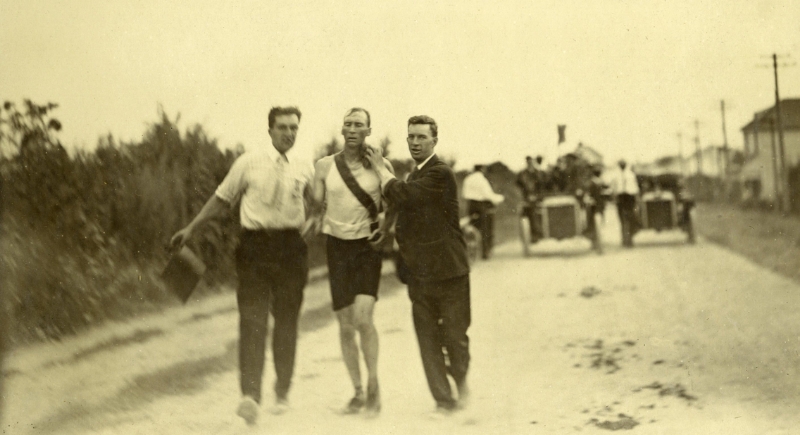How the 1904 Olympic Marathon Turned Into a Disaster
The 1904 Olympic Games in St. Louis were supposed to show off American pride. Instead, they turned into a messy sideshow. The Olympics were attached to the Louisiana Purchase Exposition, better known as the World’s Fair, which played second fiddle to a grand display of industrial achievements and colonial exhibitions rather than sportsmanship.
The marathon, intended to honor the endurance of ancient Greece, became infamous for all the wrong reasons. The race began at Washington University’s Francis Field under a blistering Missouri sun. Temperatures climbed above 90°F, and the thick humidity made every breath a struggle. Race director James Sullivan, convinced that minimal hydration built stamina, set up just one water station at the 12-mile mark. That decision transformed the event from a test of athletic skill into a test of survival.
As cars and horses followed the runners along the dusty roads, thick clouds of dirt filled the air, clogging throats and stinging eyes. Of the 32 athletes who started the race, only 14 managed to finish.
The Odd Cast of Runners

Image via Wikimedia Commons/Charles J.P. Lucas
The lineup looked more like a circus act than an Olympic field. There was Fred Lorz, a bricklayer who trained after work; Cuban mailman Félix Carvajal, who lost his travel money in a dice game and hitchhiked to St. Louis; and two South Africans, Len Taunyane and Jan Mashiani, who were part of the fair’s Boer War display. Taunyane was chased a mile off course by wild dogs. Carvajal ran in street shoes and cut-off trousers, stopping mid-race to snack on apples that turned out to be rotten.
The course itself was brutal. It stretched just under 25 miles, twisting through dusty, hilly roads scattered with stones. Drivers, trainers, and reporters followed in cars, which further sent exhaust and grit into the faces of struggling runners. Some contestants dropped from exhaustion before the halfway point. Californian William Garcia nearly became the first Olympic fatality after inhaling so much dust that it tore his stomach lining.
Cheating, Poison, and Pure Chaos
Fred Lorz was the first to reach the stadium, smiling and waving to the cheering crowd. Moments before being crowned the winner by President Roosevelt’s daughter, he confessed that he had hitched a ride in a car for 11 miles. He called it a joke, but officials didn’t laugh. Lorz was banned, though later reinstated, and went on to win the Boston Marathon the next year without the wheels.
That left Thomas Hicks, a tough runner from Massachusetts, as the actual winner. His trainers kept him moving by feeding him raw eggs, brandy, and strychnine sulfate, a poison used to kill rats. In tiny doses, it acted as a stimulant. Hicks hallucinated and begged to lie down, but his handlers refused. They sponged his mouth with warm water and gave him another shot of strychnine mixed with brandy. He stumbled into the stadium pale and delirious. His trainers carried him over the finish line as his legs twitched like he was still running.
Legacy of Lessons

Image via Wikimedia Commons/Peter Mooney
The chaos of the 1904 marathon made headlines around the world. Officials called it “indefensible,” and the International Olympic Committee came close to removing the marathon from future Games. Instead, it sparked change. By 1908, new rules banned drug use during competition and encouraged proper hydration.
Today, St. Louis still honors that strange event. Markers trace the original route, and runners follow parts of it in the city’s annual marathon. The 1904 race may have been a disaster, but it also forced the Olympics to grow up.